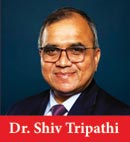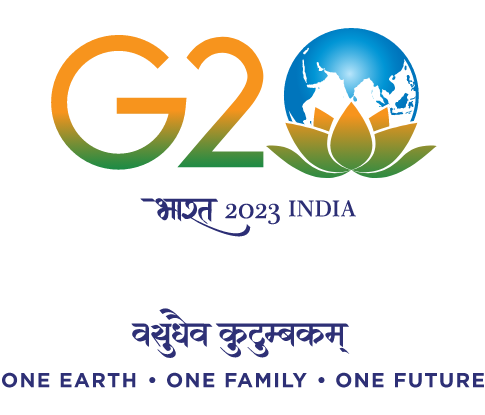 The new National Education Policy (NEP 2020) introduced a vision for radical changes in Indian higher education. As highlighted in the opening section of the policy document, achieving the United Nations Sustainable Development Goals (SDG) was the major inflection point leading to the development and announcement of the policy. While the NEP 2020 implementation is in progress with series of interventions and plans, the call for ViksitBharat @2047 (VB47) adds another inflection point to re-think and re-define the role of higher education in shaping the growth roadmap of India.
The new National Education Policy (NEP 2020) introduced a vision for radical changes in Indian higher education. As highlighted in the opening section of the policy document, achieving the United Nations Sustainable Development Goals (SDG) was the major inflection point leading to the development and announcement of the policy. While the NEP 2020 implementation is in progress with series of interventions and plans, the call for ViksitBharat @2047 (VB47) adds another inflection point to re-think and re-define the role of higher education in shaping the growth roadmap of India.
Change, transformation and reform are some keywords, appearing frequently in most of the policy documents of the Government and regulatory bodies related to education system. However, we need to understand and define their implications for us in terms of both the direction and pathway for the future, aligning with VB47 through the Sustainable Development Goals (SDGs).
The Indian higher education system is globally recognised as one of the most diverse and largest, encompassing a total of 56,835 Higher Education Institutions (HEIs), including 1,113 universities/ degree-awarding institutions and 55,722 colleges/standalone institutions (Exhibit 1.0). Among enrolled students, 79% are pursuing undergraduate programs (Exhibit 2.0), with 33.50% engaged in Arts courses and 27.4% focusing on Science, Engineering, and Technology programs (Exhibit 4.0). The diversity, complexity, and scale of this system present several challenges in implementing transformative reforms.
The All India Survey on Higher Education (AISHE) 2020-2021 reveals significant progress in various SDG (Goal 4) indicators, particularly in terms of equity and access, showcasing consistent positive trends. Encouragingly, there’s increased student participation from remote areas, including the North Eastern hill states, and higher representation from different scheduled castes/ tribes, illustrating inclusive growth in higher education. The rising numbers of universities, colleges, and nearly a twofold increase in the count of ‘Institutions of National Importance (INIs)’ indicate substantial quantitative growth in Indian higher education.
However, the quality of education remains a significant challenge in the country’s higher education sector. According to the 2023 India Graduate’s Skill Index, only 45% of graduates applying for jobs exhibit employability. At the same time, the survey indicates that approximately 57% of graduates from tier-3 colleges possess employable skills for non-technical jobs. While these statistics are illustrative and not generalised across all programs or regions in the country, they offer insightful opportunities for enhancing qualitative growth within the sector. For example, the high perceived tier-3 college graduate employability for non-technical roles triggers need to remap the quality at institutional level instead of adopting generic frameworks with assumption that mere adoption of the standardised quality frameworks will lead to automatic improvement in the graduate employability and thus, the quality of education.
The role of higher education is critical in realising the VB47. At the same time, it must be understood that the path to VB47 is not mutually exclusive from the path to SDGs. In context of higher education, its interface with the SDGs operates at two primary levels: firstly, by instigating direct changes in the sector to achieve desired outcomes in terms of access, equity, and affordability for quality higher education (SDG 4); and secondly, by meeting the knowledge and human talent requirements necessary to fulfill the remaining SDGs. The pervasiveness of higher education in driving the SDGs and thereby, facilitating a more balanced growth in terms of environmental, economic and social sustainability, is what makes the sector an essential driver of VB47.
We must shift from a culture that focuses on externally designed quality indicators to one that celebrates internal excellence in teaching, learning, and research. Cultural shifts, behavioural changes, and supportive regulations will serve as crucial drivers for the sectoral transformation; the rest is merely theoretical.
established in the North Eastern States since 2014-15.
Source: All India Survey on Higher Education (AISHE) 2020-2021, Ministry of Education, Government of India, Available: https://pib.gov.in/PressReleasePage.aspx?PRID=1894517
In view of the NEP 2020, the University Grants Commission and regulatory bodies such as the All India Council for Technical Education (AICTE), National Council for Teachers’ Education (NCTE), and others have introduced numerous reform initiatives. These initiatives focus on enhancing quality, affordability, relevance, and flexibility from the learners’ perspective. Furthermore, in many states, state-level regulatory agencies are devising new frameworks and models. However, it is imperative to comprehend, interpret, and implement these different initiatives at the institutional level, keeping the broader expectations and goals in mind. It’s crucial to remember that despite structural and functional similarities, institutions differ due to contextual variations. Therefore, for VB47, the desired transformations should primarily be understood and executed at the level of Higher Education Institutions (HEIs), with constructive guidance and support from the Government and regulatory bodies.
Re-engineering of the higher education sector in general and institutions (HEI), in particular need a fine balance in the external stakeholder requirements and internal priorities. Unless both these elements are in sync, any meaningful change will not be effective. The role of the Governments and regulatory bodies should be more of facilitator than inspectors. This is a pre-condition for stable and long-term reforms. There is no standardised solution or format rather every HEI has to evolve its own format in view of the number of contextual factors including the type of learning groups, organisations and industries they are catering too.
The prescriptive models may not be very productive. Time for HEIs to start working on crafting and implementing a new vision in the ‘AmritKaal’, a great responsibility that will go a long way in shaping the Viksit Bharat @2047.
















